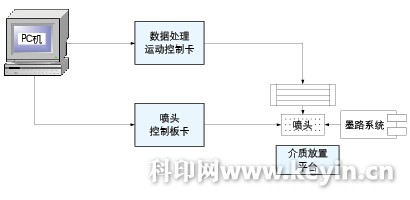Flexible printing electronic inkjet technology
BAIDU_CLB_fillSlot("890672");
Printed electronic inkjet technology is an innovative method that has gained attention in recent years. Over the past few years, I have conducted extensive research and practical exploration into flexible printed electronic inkjet technology, and I am now sharing my insights and experiences on this promising field.
Understanding Flexible Printed Electronic Inkjet Technology
Flexible printed electronic inkjet technology is a process used to print conductive lines onto various substrates, such as phenolic resin or epoxy resin. It is also known as full-printing electronic technology. This technique is ideal for manufacturing flexible circuit boards, standard PCBs, photovoltaic glass, LCD panels, and more. The term "flexible" here refers to two aspects: first, the ability to work with flexible media, and second, the adaptability of inkjet technology for small-batch, on-demand production compared to traditional PCB methods. Compared to conventional printing techniques, this method offers high speed, environmental friendliness, simplicity, cost-effectiveness, and multifunctionality. It can not only create circuit boards using conductive inks like nano-silver but also produce resistors, capacitors, inductors, batteries, transistors, and even integrated circuits by printing on different materials. This approach significantly boosts productivity while reducing costs.
Structure and Working Principle of Flexible Printed Electronic Inkjet Equipment
The flexible printed electronic inkjet system consists of several key components, including a mechanical system, drive system, motion control system, and optional visual inspection system. As shown in Figure 1, the system typically includes nozzles, a nozzle control board, a data processing motion control card, a PC, a media placement platform, an ink path system, a nozzle holder, and a nozzle frame motion system. The operation involves using the PC to generate a circuit design, which is then transmitted to the nozzle control board. The nozzles spray a special ink, and the nozzle holder moves to print precise circuits onto the medium.

Figure 1 Composition of flexible printed electronic inkjet equipment


Figure 2 Flexible printed electronic inkjet system
Main Control System To achieve high-speed and high-resolution performance, the main control system is crucial. Since the inkjet device uses multiple nozzles and requires fast data transmission, the design of the main control system focuses on efficient data handling. The system is connected via an IIC bus and uses an embedded processor (MPC8548E), USB interface, data buffer, CPLD nozzle, and peripheral control circuits. When the computer sends a printing command through the RIP program, it is processed by the MPC8548E, which controls the nozzle movement and ink ejection based on the circuit design. Ink Supply System The ink supply system is vital for maintaining print quality and reliability. It ensures the correct viscosity and surface tension of the ink, which directly affect droplet formation. Temperature plays a significant role in controlling ink viscosity, and the system must regulate both temperature and pressure to prevent clogging or poor ink flow. The system includes primary and secondary ink cartridges, an ink pump, filters, and a feedback control system to monitor ink levels and temperature. Nozzle Control and Auxiliary Circuit The nozzle control system includes modules for storing commands, decoding signals, and managing pulse waveforms. Each nozzle is controlled independently using piezoelectric ceramics, and the ink ejection is triggered by specific voltage pulses. The software interface allows users to select images, choose nozzles, and adjust printing parameters. Media Drying Technology After printing, the substrate is heated to ensure proper drying and conductivity. A temperature control system is essential to maintain consistent heating at around 100–160°C. Inks Used in Flexible Printed Electronic Inkjet Technology Conductive inks, especially nano-silver, are commonly used. These inks must be compatible with the nozzle's specifications, including viscosity, particle size, and stability. Future developments may allow the use of semiconductor-based inks to print complex electronic components on any medium. Print Precision Control To achieve high-precision printing, advanced nozzles, fine inks, and accurate motion systems are required. Using metal gratings and linear motors improves X-axis accuracy, while a stable mechanical platform enhances overall precision. This technology is rapidly evolving, and with continued advancements in material science and engineering, we are moving closer to a future where fully functional electronic circuits can be printed on demand, anywhere, and on any surface.10 Inch Campsite Handcart,Foldable Trolley Cart,Cart With Wheels Foldable,Collapsible Utility Cart
Yongkang Daluo Industry and Trade Co., Ltd , https://en.daluo.ru